[Guide] The PSP Emulators Bible! |

Benvenuto Visitatore ( Log In | Registrati )
[Guide] The PSP Emulators Bible! |
 Gruppo: Membri
Messaggi: 266 Iscritto il: Fri 25 September 2009 - 16:06 Utente Nr.: 6 Feedback: 0 (0%) 
|
Messaggio
#1
 Monday 4 July 2011 - 02:10 Monday 4 July 2011 - 02:10
The PSP Emulators Bible 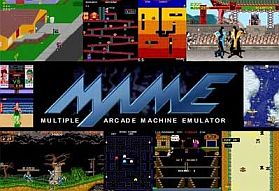 Index Chapter 1: 8 bit computers Chapter 2: 8 bit consoles & handhelds Chapter 3: 16 bit computers Chapter 4: 16 bit consoles & handhelds Chapter 5: 32 bit handhelds Chapter 6: Arcade systems Chapter 7: Other emulators PSP Emulators Bible - Official thread Introduction One of the most interesting sides of Homebrew software are certainly emulators, they allow us to bring back to life on our PSPs a lot of glorious past game machines. Emulators themselves are very often a motive which leads to buy a PSP, especially for “old school” gamers; in fact, even if, as of today the scene is filled with the so-called “open consoles” (such as Wiz, Caanoo or Dingoo and Pandora), there’s no doubt that the PSP is still one of the most powerful and convenient solutions for people who want to start exploring this fantastic world. And, even more considerably, this one remains the only handheld console to guarantee a full-speed and as good as perfect emulation of the Playstation One/PSX, thanks to the built-in emulator (the so-called POPS). This phenomenon, anyway, is costantly growing; a lot of people are starting to approach this world for the first time, asking themselves a lot of justifiable questions (the most common one is, as a reference: will it be hard to emulate this or that one machine?) or being very curious about this, also thanks to the increasingly common Chinese PMPs, which promise (at least on paper) a fantascientific emulation of lots of devices, only to be later found to be the usual low-cost devices, and with the usual emulators (often ported from the PSP ones) which we’re used to by now. And it's undoubted that today retrogaming is as popular as ever. There's no home or handheld console which doesn't have a store used to buy old titles, or old glories, to say it better. Evergreen videogames, which as of today still represent an important source of income for their respective software houses. We shouldn't be surprised, then, if the phenomenon is spreading fast, involving more and more players. Not only the "old school" ones, who lived through the times at issue, but also the younger ones, anxious to make up for the wasted time or maybe curious to try out the famous past machines people talk about so much. This "bible", then, was born for this reason, to try clearing the doubts which novice users may come across, to sum up everything that exists on PSP and that can be emulated more or less fine on our beloved handheld. At this point, someone could say that the topic has already been covered elsewhere, so why writing another guide? Well, first of all because I love the topic and I had the desire to write something about it, then because I wanted to try writing something conversational and exhaustive about this, while keeping a "tongue-in-cheek" and pleasant tone. The primary objective was therefore to deliver to the Go!PSP userbase a complete tool, from which to understand instantly which the latest version of you favorite emulator is, whether more performing emulators exist or not, and finally to group in a standalone guide all the existing PSP emulators (apart from some ancient ones, obsolete by now). The amount of emulable systems on our PSPs, among home consoles, handhelds and computers, is truly high and for this reason it's necessary to proceed systematically. In this guide we'll follow a very precise order, starting from 8bit systems (computers and consoles) to proceed with 16bit ones (computers and consoles, too) and ending with 32 and 64bit ones. Next to the title of each emulator (which will be indicated in red) you'll be able to click on the INFO button and you'll be sent to the appropriate Wikipedia page, so the most curious people or the ones who simply wish to acquire the highest possible amount of information available about that system, will only need to click on the aforementioned button. At the bottom, instead, you'll find the name of the respective PSP emulator in green, and clicking on the download button will allow you to download the most updated version. We state from the beginning that if a "signed" version of an emulator exists, it will run on whatever PSP with whatever firmware, official or custom, as if it were a Sony-created software. In the case, instead, that a "signed" version of the emulator is not available, you'll need a HEN or Custom Firmware to run it on your PSPs; I remind those of you who didn't know, that as of today (6.39 Firmware) it's possible to launch Homebrew and install Custom Firmwares on every PSP (obviously with different procedures for which you can refer to this exhaustive guide, depending on the PSP model you own). Before we start, a few "evergreen" advice: ALWAYS read the readme.txt included with each emulator to know the buttons to use and the relative button combos to activate all the functionalities of the software, apart from other useful information, such as the compatibility of the emulator itself. It might seem some trivial advice, but I assure you that the majority of people has never read a readme in their whole life. This guide, besides, doesn't guarantee to be exhaustive on the subject and represents just my personal point of view. It's a good thing to specify from the beginning that usually the folder you install emulators into doesn't change and is always "X:\PSP\GAME" (where X is obviously your memory stick). Furthermore, I remind you that using an emulator is not absolutely legal per-se, but using copyrighted material downloaded from the internet is not. THe following article wants to just have an informative purpose about the retrogaming phenomenon, and doesn't absolutely intend to bring offense to the respective copyright holders or to justify piracy. After this short, and necessary, premise I shall say that the moment has come to start examining the emulators available for the small Sony handheld! -------------------- No matter the man, we all wear masks... Either on our faces or over our hearts. Vuoi scaricare ISO e ROMz delle console più recenti? Clicca qui o qui per trovarne a bizzeffe! (Uno script non fa vedere questa frase dai mod) Pensieri: » Click to show Spoiler - click again to hide... «  |
 |
 Gruppo: Veterani
Messaggi: 2,831 Iscritto il: Tue 25 August 2009 - 10:56 Da: Pescara Utente Nr.: 7  Playstation Network TAG: Playstation Network TAG:Giddolo Feedback: 0 (0%) 
|
Messaggio
#2
 Wednesday 3 August 2011 - 12:07 Wednesday 3 August 2011 - 12:07
Other Emulators 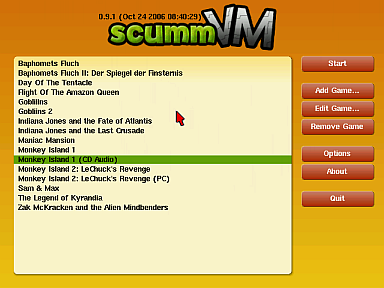 Acronym of Script Creation Utility for Maniac Mansion, the SCUMM was the most famous engine for the creation of graphic adventures which are now legends. How not to quote the various Monkey Island, Indiana Jones, Zak Mckracken, maniac Mansion and other great Lucas' adventures? This emulator has rewarded the full maturity and, in its last version, it permits to bring back to life on PSP lots of mythical adventures. The thing is made more precious by the fact that, in the meantime, some adventures are been made downloadable freely and legally so I'll say that the ScummVM enters into the category of that emulator which cannot be missed into your Memory Stick. Once you have decompressed the zip with the emulator, copy its contents into the X:/PSP/GAME folder. Copy the graphic adventures, the ones supported of course, into the same folder of the ScummVM. The first step to make it work is to let the software recognize the adventures you want to emulate. Once everything is started you'll find an orange screen; move with the analog stick on Add Game, press X, search the folder with your game (eg. Broken Sword), press X once to select (it'll become green), then press X another time on Choose in the left hand side lower corner. A little menu will be opened and you can now choose settings for language, subtitles, graphics, resolution and so on. Change the settings as you prefer then press Ok in the righ hand side lower corner. In Options, in MISC, you'll find the autosave setted on every 5 minutes. Obiviously, once you have added a game you'll permanently find it on the initial list. Go on the title you want to play and double-press X (which works like the Left button of the mouse) or highline it (pressin X once) and press START on the lower part of the screen to make it start. This are the buttons: » Click to show Spoiler - click again to hide... « In addiction, you can download on the official site of the ScummVM project masterpieces such as Beneath to Steel Ski, Lure of the Temptress, Flight of the Amazon Queen from the download section, legally. This is certainly a chance not to be missed to replay those masterpieces in an all legal way. ******* 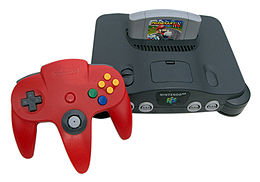 The Nintendo 64 was the console which had the difficult task of succeeding his majest the Super NES. To revive its deeds will have been hard and actually the Nintendo64, notwithstanding the good sales (almost 30 million consoles sold worldwide) didn't succeed in bissing the success of his ancestor thanks to the exploit of the PlayStation which would have sold more than 100 million of consoles. Anyway, the Nintendo64 was a console which has seen titles considered even nowadays among the most successful games of all times; games like Zelda: Ocarina of Time and Majora's Mask, and even Pilotwings64, Mario64 and other classics. It is a very powerful machine to emulate and no-one, at least at the beginning, thought it was possible to emulate it with good results on the PSP. The sceptical ones were let down because thanks to the work of StrmnNrmn before and of the Daedalus Team after, it was possible to have a quite good emulation even on the little one made by Sony. The project is far from being completed but setting it up properly it is possible to obtain good resultes and some games will be almost or entirely full-speed. Our good Kakarotto has created a thread with all the compatibility tries done by him and the right setting for the tested ROMs. ******* 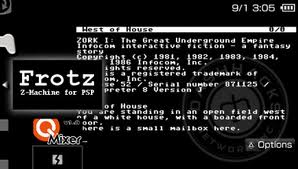 I know that many of you are probably wondering "what the heck is this Z-Machine?". Actually only the older ones will have the answer to this question. It is a virtual machine created during the distant 1979 used by Infocom for its textual adventures. It pointless to say that it is an emulator dedicated to the true retrogamers, in the most pure significant of the term. I cannot imagine a retrogaming more retro than this one, like going back to the starts of videogaming! Just a little curiosity: the Z stands for Zork, the first adventure of Infocom. The emulator is called Frotz-PSP. Here we have a piece of readme which explains how to install and to run its adventures: » Click to show Spoiler - click again to hide... « ******* 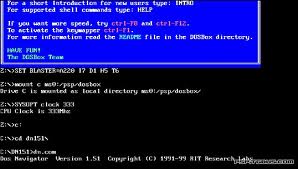 Dosbox is an abandoned project, sadly, which allows us to play on our PSP some old glories which run on the homonymous Microsoft OS. Even if it is a no more updated project, it permits to play lots of titles which run under DOS. At this link you'll find a very good list of retrocompatibility of many games which support Dosbox (concerning PSP). ******* I thank Kakarotto for his precious cooperation and the support offered during the writing of this article. The reproduction and the copy, even partial, without the author's permission is strictly forbidden outside GbaRL and Go!PSP Dragon Chan - © 2011 Go!PSP.it Translated and adapted by Davi92 and MJ2332. --------------------  |
 Davi92 [Guide] The PSP Emulators Bible! Monday 4 July 2011 - 02:10
Davi92 [Guide] The PSP Emulators Bible! Monday 4 July 2011 - 02:10
 MJ2332 8-Bit Computers
C64
Okay, I'll admit it, ... Friday 8 July 2011 - 10:18
MJ2332 8-Bit Computers
C64
Okay, I'll admit it, ... Friday 8 July 2011 - 10:18
 MJ2332 8-bit Consoles and Handhelds
Magnavox Odyssey
... Sunday 24 July 2011 - 11:25
MJ2332 8-bit Consoles and Handhelds
Magnavox Odyssey
... Sunday 24 July 2011 - 11:25
 MJ2332 16-bit Computers
Commodore Amiga
And here come... Tuesday 26 July 2011 - 17:40
MJ2332 16-bit Computers
Commodore Amiga
And here come... Tuesday 26 July 2011 - 17:40
 MJ2332 16-bit Console and Handheld
Super Nintendo
The... Tuesday 26 July 2011 - 17:44
MJ2332 16-bit Console and Handheld
Super Nintendo
The... Tuesday 26 July 2011 - 17:44
 MJ2332 32-bit Handheld
Gameboy Advance
The Gameboy Ad... Tuesday 26 July 2011 - 17:51
MJ2332 32-bit Handheld
Gameboy Advance
The Gameboy Ad... Tuesday 26 July 2011 - 17:51

 Davi92 Arcade
CPS1 and CPS2
Acronym of Capcom Play Sy... Tuesday 26 July 2011 - 18:31
Davi92 Arcade
CPS1 and CPS2
Acronym of Capcom Play Sy... Tuesday 26 July 2011 - 18:31  |

|
Versione Lo-Fi | Oggi è il: Fri 2 May 2025- 07:25 |